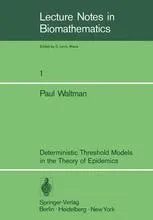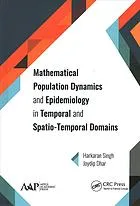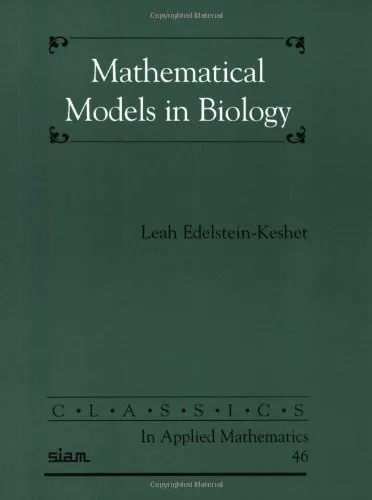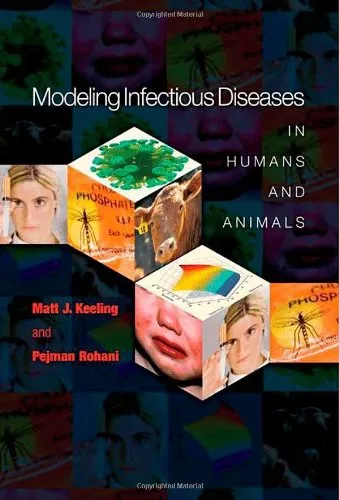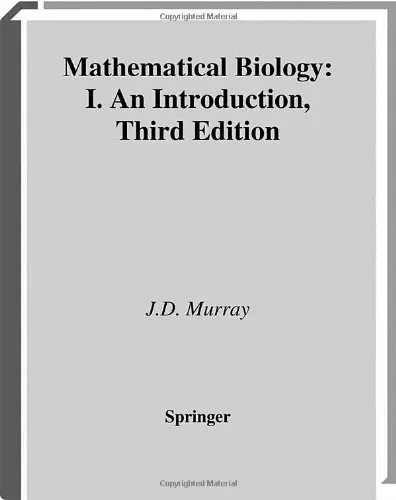Deterministic Threshold Models in the Theory of Epidemics
5.0
Reviews from our users

You Can Ask your questions from this book's AI after Login
Each download or ask from book AI costs 2 points. To earn more free points, please visit the Points Guide Page and complete some valuable actions.Related Refrences:
Introduction
In the dynamic and ever-evolving field of epidemiology, mathematical models act as essential instruments, offering deep insights into the spread, control, and management of infectious diseases. Deterministic Threshold Models in the Theory of Epidemics, authored by Paul Waltman, provides a robust and comprehensive examination of deterministic models, focusing specifically on threshold concepts that dictate epidemic outbreaks. This book serves as a valuable resource for both researchers and students who seek to build a strong mathematical foundation in epidemiology.
Through a combination of rigorous analysis and practical applications, this book delves into how diseases propagate through populations, the influence of factors such as immunity, vaccination rates, and social behaviors, and the mathematical thresholds that determine whether an epidemic will die out or grow uncontrollably. With analytical precision, the text bridges the gap between theoretical mathematics and real-world applications, making it an indispensable guide for professionals working in biology, public health, or applied mathematics.
Summary of the Book
At its core, Deterministic Threshold Models in the Theory of Epidemics explores epidemic threshold theory by employing deterministic mathematical models—constructs that do not rely on probabilistic or stochastic variations. The book discusses these ideas conceptually while also supplying the mathematical rigor required to implement them in practical scenarios.
The opening chapters establish the mathematical tools and frameworks fundamental to understanding epidemic models. Concepts such as differential equations, stability analysis, and equilibrium points are explored in detail, helping readers lay a solid groundwork for tackling more complex models later. Waltman then introduces threshold concepts, specifically the basic reproduction number (R0), a core metric that determines whether a pathogen can spread successfully within a population.
Subsequent sections delve into compartmental models such as SIR (Susceptible-Infectious-Recovered) and extensions that consider vaccination strategies, immunity waning, and other biological and social complexities. Each chapter builds on the last, weaving together theory with practical examples that highlight the significance of thresholds in controlling epidemics. In addition, the book touches on applications in public health policy, showing how theoretical results can translate into actionable decisions to limit the spread of diseases.
Key Takeaways
- The Power of Thresholds: The concept of an epidemic threshold, particularly the reproduction number (R0), is critical in determining the dynamics of disease spread and understanding when interventions are necessary.
- Compartmental Models: Models like SIR provide powerful tools for analyzing epidemics and crafting public health strategies.
- Mathematics Meets Reality: Theories presented in this book have significant, real-world implications, from controlling seasonal flu outbreaks to managing global pandemics.
- Policy Implications: Beyond the mathematics, the book demonstrates how theoretical results can guide decision-making in vaccination campaigns, quarantine protocols, and other public health interventions.
Famous Quotes from the Book
"There exists a mathematical inevitability to the spread of disease, governed by thresholds that, once crossed, can rarely be reversed without significant intervention."
"The beauty of deterministic models lies not only in their rigor but in their ability to provide clarity amid the chaos of an epidemic."
"Understanding thresholds is not merely an academic pursuit but a critical endeavor that empowers societies to predict and control epidemic trajectories."
Why This Book Matters
Epidemiology has never been more vital to human health than it is today. In a world grappling with global pandemics and the threat of emerging infectious diseases, understanding the mechanisms that govern disease spread is essential for both scientists and policymakers. Deterministic Threshold Models in the Theory of Epidemics equips readers with the tools to grasp these mechanisms, offering firm mathematical foundations alongside a practical understanding of their implications.
This book stands as a bridge between abstract mathematical theory and pressing real-world challenges. Through its focus on deterministic models, it allows readers to engage with the clean, predictable aspects of epidemic modeling while remaining conscious of the complexities of human populations and behaviors. Importantly, Waltman's work also underscores the importance of interdisciplinary collaboration, integrating insights from mathematics, biology, and public health to provide a holistic perspective.
Whether you are a researcher delving into mathematical epidemiology for the first time or a seasoned public health advocate looking to refine your understanding of threshold concepts, this book is an invaluable guide. Its influence extends beyond academia, holding the potential to shape how we think about and respond to infectious diseases in our interconnected world.
Free Direct Download
You Can Download this book after Login
Accessing books through legal platforms and public libraries not only supports the rights of authors and publishers but also contributes to the sustainability of reading culture. Before downloading, please take a moment to consider these options.
Find this book on other platforms:
WorldCat helps you find books in libraries worldwide.
See ratings, reviews, and discussions on Goodreads.
Find and buy rare or used books on AbeBooks.
1406
بازدید5.0
امتیاز0
نظر98%
رضایتReviews:
5.0
Based on 0 users review
Questions & Answers
Ask questions about this book or help others by answering
No questions yet. Be the first to ask!
